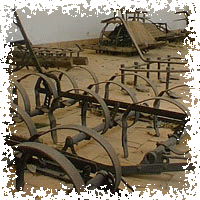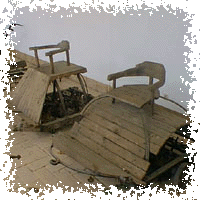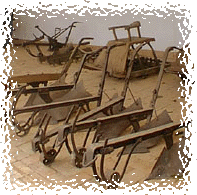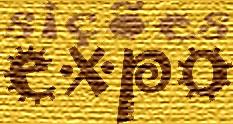 |
 |
In a basically rural environment, tools for farming the earth play a major role. These are tools which go back
to the earliest times which man learned to create, develop, and modify for his needs.
The modern plough evolved from primitive ploughs which go back thousands of years and played a major role in the
development of agriculture and human settlement. These ploughs are manufactured mainly of iron and the blade can
be adjusted for the type of terrain and for different applications.
(Ernesto V. de Oliveira; F. Galhano; B. Pereira, Alfaia Agrícola Portuguesa, Lisboa, I.A.C.,
1976, 209-10, Adaptado).
|
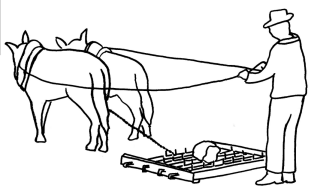 |
|
|
|
.
.
.
.
.
.
.
.
.
.
.
.
.
.
|
|
|
|
|
The harrow is used to till fields after ploughing and to smoothe them before or after seeding. The traditional
harrow consists of two, three or four beams of wood, called "banzos", tied together by a sort of connections
called 'testeiras ou travessas' where teeth are embedded, sometimes shaped like nails, sometimes like a knife,
made of iron or wood. Often a large stone was placed on the harrow, or the operator stood on it, to increase its
weight.
(Ernesto V. de Oliveira; F. Galhano; B. Pereira, Alfaia Agrícola Portuguesa, Lisboa, I.A.C., 1976,
209-10, Adaptado).
|
|
The threshing machine, known to the Romans as a "plostellum", was a device for separating cereal grains from
chaff, notably wheat and other legumes. It contained wooden rollers with wooden pins or iron blades shaped like
knives and was always pulled by oxen. The driver sat on top while the rollers turned inside a box where the
blades separated the kernels from the husks and cut the stalks into straw.
(Ernesto V. de Oliveira; F. Galhano; B. Pereira, Alfaia Agrícola Portuguesa, Lisboa, I.A.C.,
1976, 304-5, Adaptado). Author is Luisa Cunha.
|
|
|
|
|
.
.
.
.
.
.
.
.
.
.
.
.
.
.
.
|
|
|
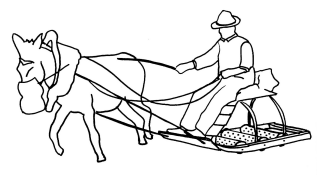 |
|
Home |




